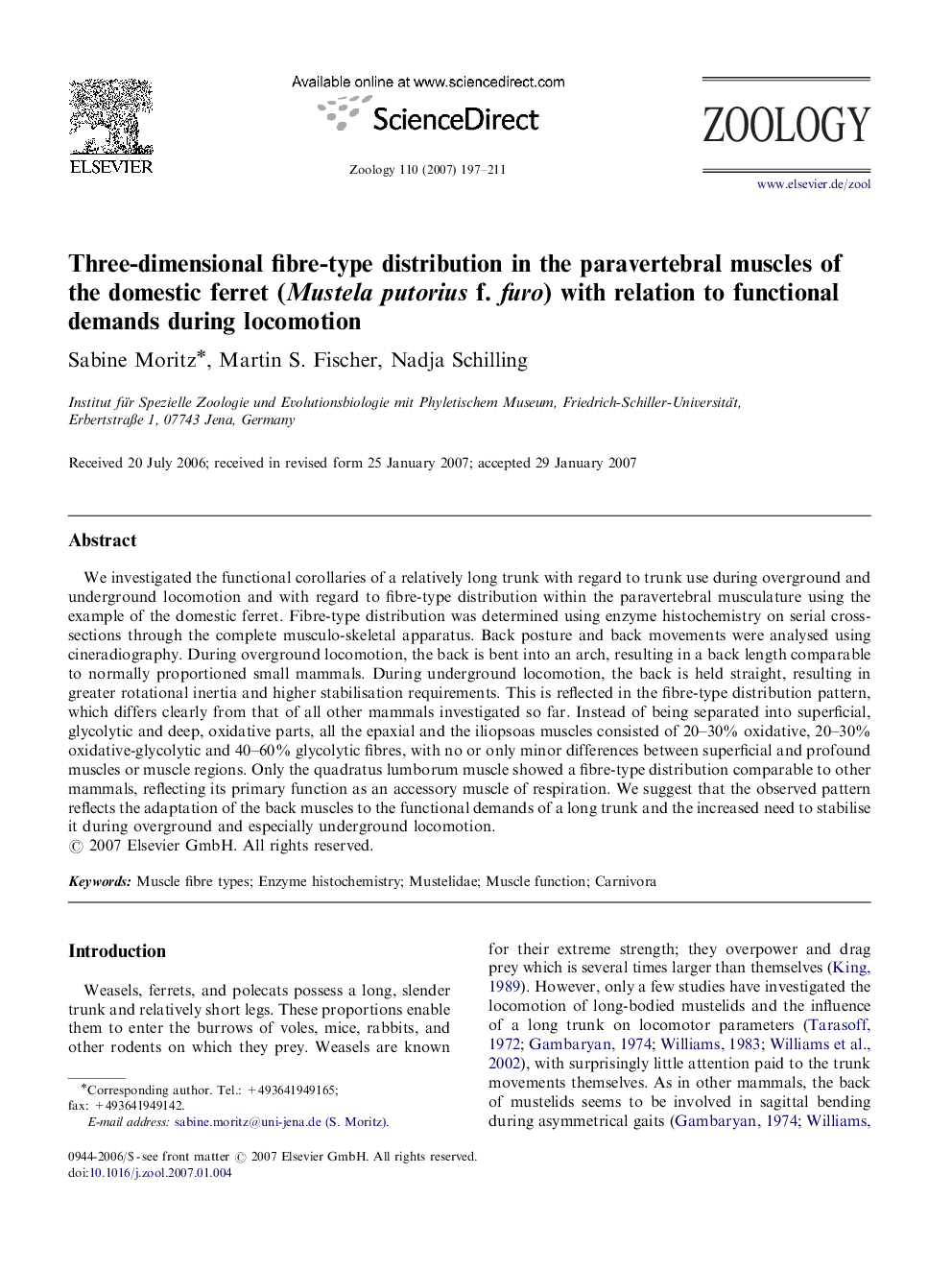| Article ID | Journal | Published Year | Pages | File Type |
|---|---|---|---|---|
| 2791408 | Zoology | 2007 | 15 Pages |
We investigated the functional corollaries of a relatively long trunk with regard to trunk use during overground and underground locomotion and with regard to fibre-type distribution within the paravertebral musculature using the example of the domestic ferret. Fibre-type distribution was determined using enzyme histochemistry on serial cross-sections through the complete musculo-skeletal apparatus. Back posture and back movements were analysed using cineradiography. During overground locomotion, the back is bent into an arch, resulting in a back length comparable to normally proportioned small mammals. During underground locomotion, the back is held straight, resulting in greater rotational inertia and higher stabilisation requirements. This is reflected in the fibre-type distribution pattern, which differs clearly from that of all other mammals investigated so far. Instead of being separated into superficial, glycolytic and deep, oxidative parts, all the epaxial and the iliopsoas muscles consisted of 20–30% oxidative, 20–30% oxidative-glycolytic and 40–60% glycolytic fibres, with no or only minor differences between superficial and profound muscles or muscle regions. Only the quadratus lumborum muscle showed a fibre-type distribution comparable to other mammals, reflecting its primary function as an accessory muscle of respiration. We suggest that the observed pattern reflects the adaptation of the back muscles to the functional demands of a long trunk and the increased need to stabilise it during overground and especially underground locomotion.
